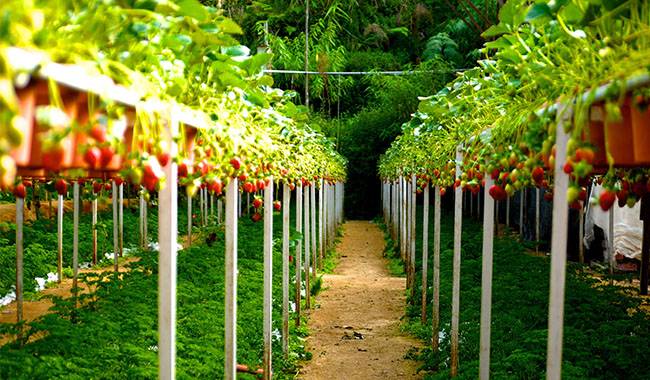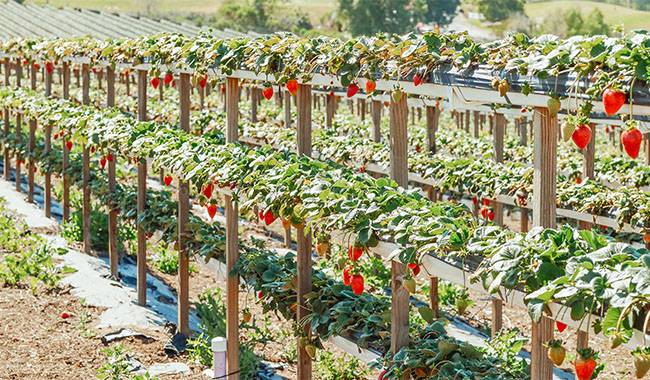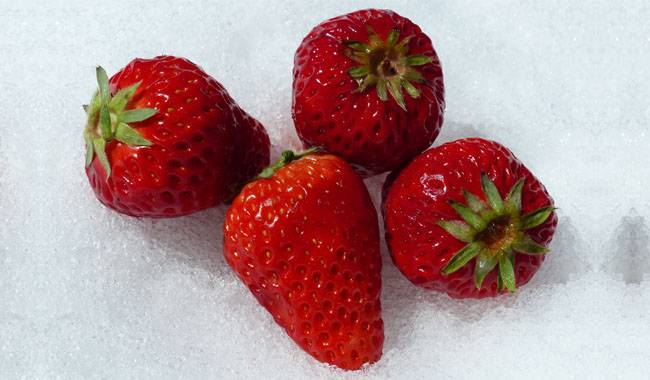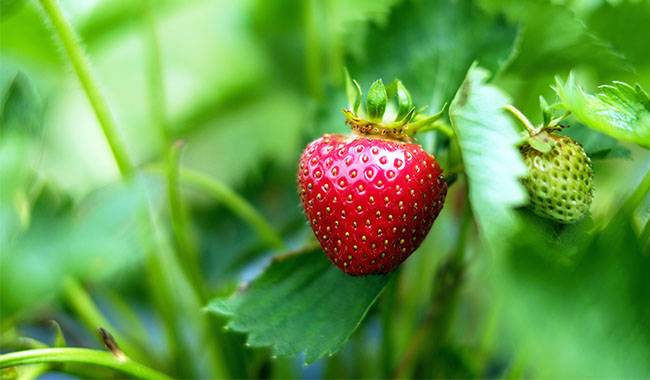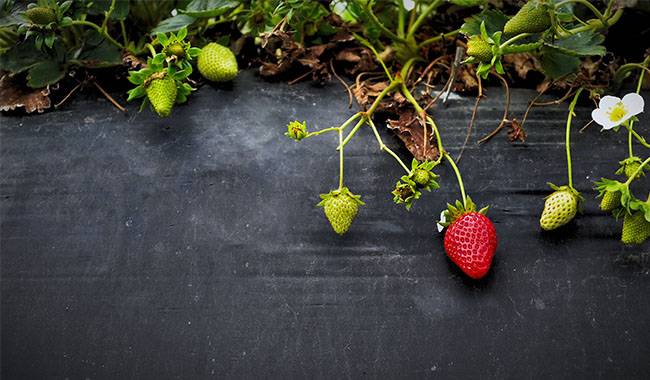
Our grandmothers, who use to grew garden strawberries and not concerned with the issue of mulching. But today, this agricultural technique has become a major component in achieving high berry quality and reducing crop losses.
Some may say that it is troublesome. But practice shows that the cost of labor, in this case, is rewarded a hundredfold.
In this article, we provide you with nine of the best materials for covering strawberries in the garden.
WHEN AND WHAT SHOULD I USE TO MULCH MY STRAWBERRIES?
Mulching is the covering of the soil surface with organic and inorganic materials. Mulching is a way to conserve moisture, control weeds and fertilizers, act as a barrier against some pests, and protect the berries from contact with wet soil.
The advantages outweigh the disadvantages. So if you haven’t mulched your garden strawberries yet, it may be worth writing this technique into your recent plans.
The terms of mulching garden strawberries appear at different times in different regions. For this reason, the reference point for this agricultural technique is not the calendar, but the condition of the beds.
Spring and summer mulching begins when the bush appears as a cotyledon. In the southern regions it is the end of spring, and in the north – the beginning of summer.
Before mulching, it is necessary to remove weeds, slightly loosen the bed, water, and fertilize.
Do not mulch strawberries-only with continuous planting. In this version, the culture grows a continuous carpet and mulch, which is simply not possible.
The total weight yield of this plantation does not differ much from planting in rows, because there are more bushes arranged in the same area. But in solid planting, the weight of a berry is much smaller – the berries are smaller and take longer to harvest.
As a result, solid planting is now almost a thing of the past, abandoned by our gardens. Strawberries have become a noble crop, and one of the hallmarks of this “nobility” is its cultivation methods, including mulching.
The most popular methods of mulching strawberry plants are currently films and non-woven fabrics, etc. But besides them, there are straw, grass, sawdust, pine needles, peat, compost, humus – everything depends on the composition, wishes, and possibilities of the soil.
In general, mulches are divided into inorganic and organic, as well as dark and light colors. Inorganic sources of mulch include PVC film and non-woven fabrics, among others. Organic mulches include any type of organic material.
Sometimes these two types of mulch are used together. For example, black film and straw. The first is used as the primary mulch material and helps to speed up the warming of the beds during the spring.
The second is a supplement for the warmer seasons and, because of its lighter color, reflects the sun’s rays and keeps the temperature under the film down a bit.
Thanks to the long practice of mulching, each type of mulch today have its own characteristics, on the basis of which you can determine in advance whether it is suitable for your situation. And avoid the mistakes made by other gardeners.
What is the best ground cover for garden strawberries, no one can answer, because it depends entirely on the region of the culture of cultivation, the type of soil, and sometimes on the variety of berries?
And “its” often can only be discovered through experimentation. For me, it turns into peat, acidifying to a certain extent our neutral soil (which strawberries love).
Each type of mulch has its own advantages and disadvantages. However, choosing what to apply in their beds, you need to be guided not only by them but also by the availability of the material.
This mulch is quite high and many people are concerned about how to lay it down. It’s simple: lay the mulch material around the bush and over the free space of the bed, without covering the heart (the top bud), i.e., with a small indentation in the plant.
PLEASE READ BELOW ABOUT THE 9 BEST ORGANIC AND SYNTHETIC MATERIALS FOR MULCHING STRAWBERRY PATCHES.
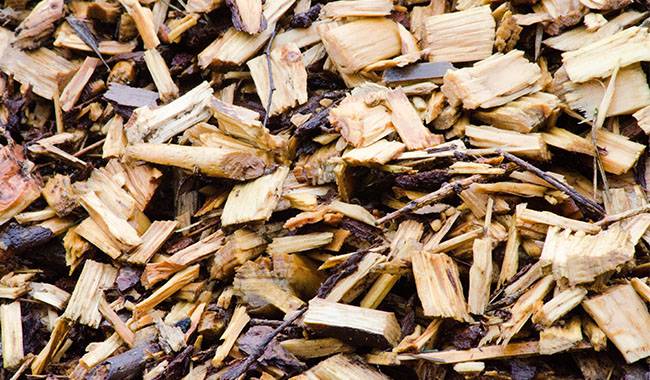
Covering Strawberries with Black Film
One of the most common methods of mulching strawberry patches can be described as black film.
Benefits of using it.
- It has good moisture retention.
- It does a good job of controlling weeds.
- It smooths out temperature fluctuations between seasons.
- It protects berries from contact with the ground.
- It prevents the beard from rooting and sprouting.
- It shows the longevity of use if you choose the right thickness.
- Raise the soil temperature by 34-35°F (1.5-2°C).
It is necessary to choose a black film for covering the strawberry garden, paying attention to its thickness of 30 microns. The service life of such cloth will be 3 years.
There are also disadvantages of black film covering strawberry patches. Under the black film, it is necessary to properly organize the ridges or boxes and lay drip irrigation, which is quite time-consuming.
Also, because the film is “impermeable”, the soil under it can overheat in the summer, which is not good for southern regions.
In addition, the film accumulates too much moisture, which helps the propagation of woodlice, slugs, and fungal diseases and, in some cases, root thaw.
Strawberry garden mulching with spun clay
The most popular today is the mulching with spun clay – fiber, agricultural nonwoven.
Advantages of using.
- Spunbond, like a black film, does not allow light to pass through, which keeps weeds growing.
- It delays the evaporation of soil water, thus saving water for irrigation.
- It supports soil temperature conditions during spring and fall temperature jumps.
- In contrast to film, spun-bond can be used for watering.
- Spunbond material can be used for irrigation; and will “breathe”.
Disadvantages of using spun-bond material for strawberry mulching.
- In southern regions, the soil under the spunbond fabric may overheat.
- In high humidity areas, condensation may collect under the surface of the fabric, increasing the risk of fungal diseases.
Spunbond fabric used to cover strawberry gardens is best selected in two colors (black on one side and light on the other) with a fabric density of 60 g/m2. In this variant, it is able to serve for 3 years. The white surface will reflect the sun’s rays and prevent the soil from overheating.
As a precautionary measure against root warming, it is sometimes ventilated by lifting the cloth from the edges of the flower bed.
Mulching strawberries with straw from the garden
An attractive raw material for mulch is considered to be straw.
Advantages of straw as a mulch for strawberries.
- It is easy to buy.
- It is an organic material.
- It breathes.
- It is permeable to water.
- It keeps soil evaporation under control.
- It reflects the sun.
- protects the berries from contact with the ground.
There are also disadvantages. Straw bales are difficult to dismantle because of their strong compressibility. The straw stems are quite long – they are not easy to lay and sometimes they have to be cut with scissors in order to cover the soil under low strawberry bushes.
If the straw is not placed tightly enough, weeds can germinate through it. However – after decaying, straw can make the soil acidic, so care is needed when using straw on soil that is already acidic.
The same advantages and disadvantages await the gardener in mulching a strawberry garden with hay. However, there are more weed seeds in hay than in straw.
Covering strawberries with conifers in the strawberry patch
You can also mulch strawberries with fallen wood of coniferous trees.
Advantages.
- friability.
- Water permeability.
- It prevents the evaporation of water.
- It protects the berries from pests, especially snails and slugs.
- It disinfects the soil.
- It inhibits the development of gray rot.
Disadvantages.
This mulch is quite messy – it contains not only needles from conifers but also twigs and cone debris. It is not easy to collect the right amount.
Because it is thorny, it is not easy to spread. If used frequently, decomposing needles can acidify the soil.
Therefore, acidic soils, it should be mixed with ash. Or every few years, deoxygenate the soil.
Mulching strawberries with sawdust
Many people consider sawdust to be the most successful material for mulching strawberries.
Advantages.
- They are easy to work with: they lie in an even layer.
- They look good in the bed.
- They reflect sunlight well (this is especially important for southern regions).
- They retain moisture well.
- Better than grass, hay, or straw, they reduce the growth of weeds.
- Make it harder for snails and slugs to move.
- improve soil structure.
Disadvantages.
Through decomposition, sawdust absorbs nitrogen. For this reason, for mulches, it is necessary to use sawdust that is already old and lying down or apply nitrogen before use.
In addition, sawdust acidifies the soil, which is not bad in alkaline and neutral soils, because strawberries prefer slightly acidified soil, but not in acidic soils.
In this case, the sawdust should be mixed with ash, dolomite powder, or lime before application.
To prepare the sawdust for mulching, it must be spread in a urea solution or mixed with manure or chicken manure. On acidic soils, add 100 g of lime to a bucket of wood chips.
Mulching strawberries with garden chips
If there is a sufficient supply of wood chips, you can use them to mulch your strawberries.
Advantages: As with all mulching materials, wood chips do a good job of suppressing weed growth. Protects the soil from weathering and the berries – from contact with the ground. It looks beautiful in the bed.
Disadvantage: acidifies the soil. The soil under the chips dries out faster and is compacted compared to other mulching materials. And this is undesirable because the root layer in the strawberry seedbed should be not only loose but also moderately moist. Removal of such mulch at the end of the season is quite troublesome.
Mulching the strawberry garden with grass, weeds, and plant debris
You can use mowed lawn grass, weeds, and plant debris as mulch.
Advantages: This type of mulch is free. It is easy to spread. It keeps the soil moist. When decomposed, the grass nourishes the soil; when mulched in a thick layer, it suppresses the growth of weeds.
The cut grass is best “wilted” in the shade before being used as mulch.
Disadvantage: When laid in a thick layer, this mulch can easily be compacted and rot during rainfall. Therefore, the spreading of grass clippings and plant residues should be done gradually, adding small layers with some periodicity. Fresh grass, weeds, and plant debris must be added continuously as they dry out and strongly decrease in volume.
When laying weeds under strawberry bushes, it is best to remove the inflorescence and seeds from the bush.
Covering strawberries with compost, humus
You can cover the strawberry garden with compost or humus.
Advantages: They retain moisture well. Suppresses the growth of weeds. Nourish the beds. They are a good fertilizer. Prevents pathogens. Can improve the structure of the soil.
Disadvantages: Dark colors can increase soil temperature. Improperly prepared compost and hummus can be a source of weeds and disease. This type of mulch requires regular watering in summer.
Mulching strawberries in the garden with peat
Another material used for mulching is peat. However, here it is important to understand that peat has different acidity levels. The most harmless is – neutral. The acidity is not high – lowland. But it is better not to use high peat, especially on acidic soils.
Advantages: Working with peat is pleasant. It absorbs water very well and inhibits its evaporation. Deals perfectly with weeds. Lawns mulched with peat look good. Weeds that break through the peat are easy to remove. Topsoil remains crumbly.
Any organic mulch should be covered with a 2-2.8inch (5-7cm) layer.
Disadvantage: Peat is highly hygroscopic, so make sure the soil underneath is well saturated when watering. Not all types of peat are equally available. Due to its dark color, it raises the temperature of the soil.




